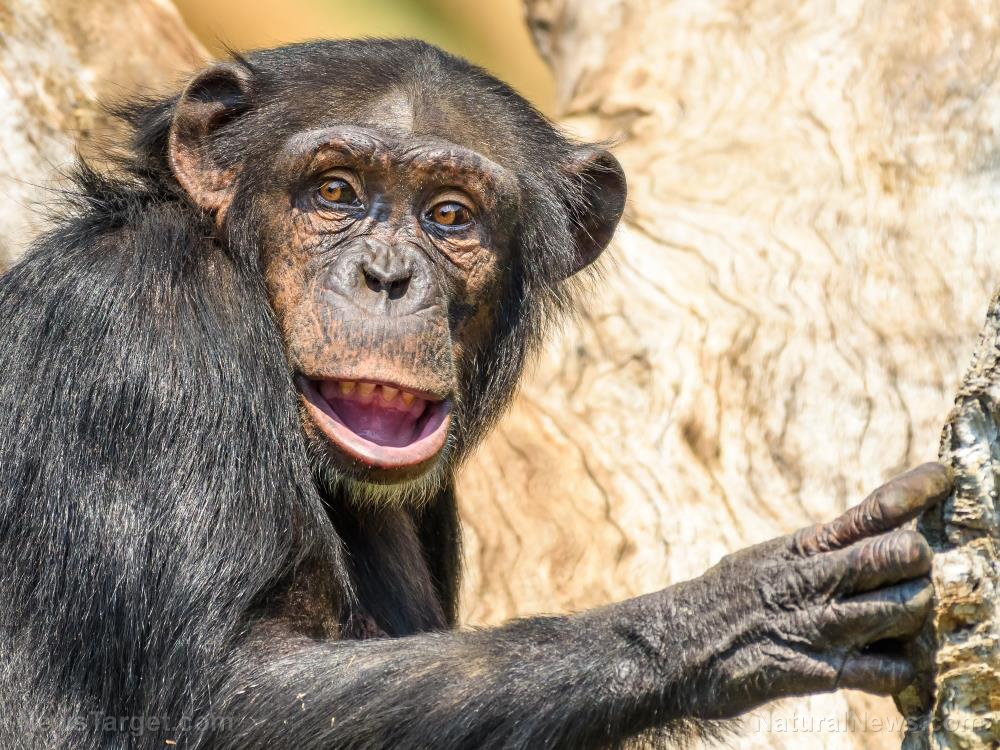
While the jury's still out on how such a small difference can result in two distinct organisms, German scientists recently found a striking similarity between the humans and chimps when it comes to social behavior. In their findings published in Primatologica, the team from the Max Planck Institute for Evolutionary Anthropology presented a detailed account of a new “behavioral realm” in Eastern chimpanzees (P. t. schweinfurthii) in DR Congo. The researchers noted discrete behavior that isn't linked to ecology. In particular, the chimpanzees used stone and wooden hammers to crack nuts despite the availability of other hammers and appropriate nuts across the species' range. They also found other unique tools, which they called a “new chimpanzee tool kit.”
“We describe a new chimpanzee tool kit: long probes used to harvest [epigeic] driver ants (Dorylus spp.), short probes used to extract ponerine ants and the arboreal nests of stingless bees, wands to dip for D. kohli and stout digging sticks used to access underground meliponine bee nests,” they wrote in their report.
Behavioral differences based on region
Earlier studies have already identified large-scale behavioral patterns in chimpanzees: from clubs used to pound open beehives in Central Africa to tools used to scoop algae in West Africa. The current study builds on these findings, documenting implements used by the Eastern chimpanzees.
“Over a 12-year period, we documented chimpanzee tools and [artifacts] at 20 survey areas and gathered data on dung, feeding remains, and sleeping nests,” explained lead author Thurston Hicks, a guest researcher at MPI-EVA and a professor at the University of Warsaw.
The team also found that chimpanzees in DR Congo also have a distinct method of processing food. Similar to other chimpanzee populations, Eastern chimps pound hard-shelled fruits against tree trunks or rocks. However, they found that the primates also pound open two kinds of termite mounds, Cubitermes sp. and Thoracotermes macrothorax (a soil-feeding termite), which chimpanzees in other regions ignore.
In comparison, other chimpanzees feed heavily on the common termite Macrotermes muelleri. The team found that Eastern chimps do not fish for these termites, despite their availability.
“We have also documented tentative evidence of the pounding of African giant snails and tortoises against substrates, both novel food resources for chimpanzees,” added Hicks. “Finally, ground-nesting behavior is common across the area.”
In the Bili-Uere region in northern DR Congo, where the team conducted the decade-long study, they discovered behavioral changes in the chimpanzees per region. Chimpanzees found in the south lacked honey-digging tools and fruit-pounding implements that were found in sites up north. The researchers also encountered fewer tools for extracting driver ants in the southern region.
Fighting to survive
For the authors of the study, it's discoveries like this that fuel the need to learn more about the natural world.
“We may feel like we have already discovered all there is to discover,” said co-author Hjalmar Kuhl, an ecologist at MPI-EVA. “We have so much more to learn about the natural world.”
The team also hopes that this will spark conservation efforts to protect this remarkable but widely threatened population. Currently, the International Union for Conservation of Nature and Natural Resources lists chimpanzees as endangered species, with certain populations possibly extinct in parts of Central Africa.
Fortunately, it's not just social behavior and DNA that humans and chimpanzees share: An article in PLOS ONE revealed that wild chimpanzees are also showing signs of resiliency. The new study, led by an international team of scientists from Spain and Sierra Lione, found that chimpanzees in southwestern Sierra Lione are adapting to survive, nesting on oil palms that are cultivated by locals. Ironically, the trees are one of the main reasons why the chimps have lost their forests; in particular, to "slash and burn" agriculture.
Data from camera traps revealed that the chimps have adapted to human conditions while living close to settlements. They forage food early in the mornings or late in the day and avoid district roads to minimize their contact with humans. In their paper, the scientists highlighted that building more roads in these areas can be detrimental to chimpanzees, as it will adversely affect distribution and behavior.
It looks like chimpanzees have a long road ahead of them. What will their closest relatives (in taxonomy) – the Homo sapiens – do? (Related: Chimps call out audible alarms in tactical context, just like humans.)
Learn more on how people affect the ecosystem (for better or worse) at Ecology.news.
Sources include:
Karger.com [PDF]
Please contact us for more information.























